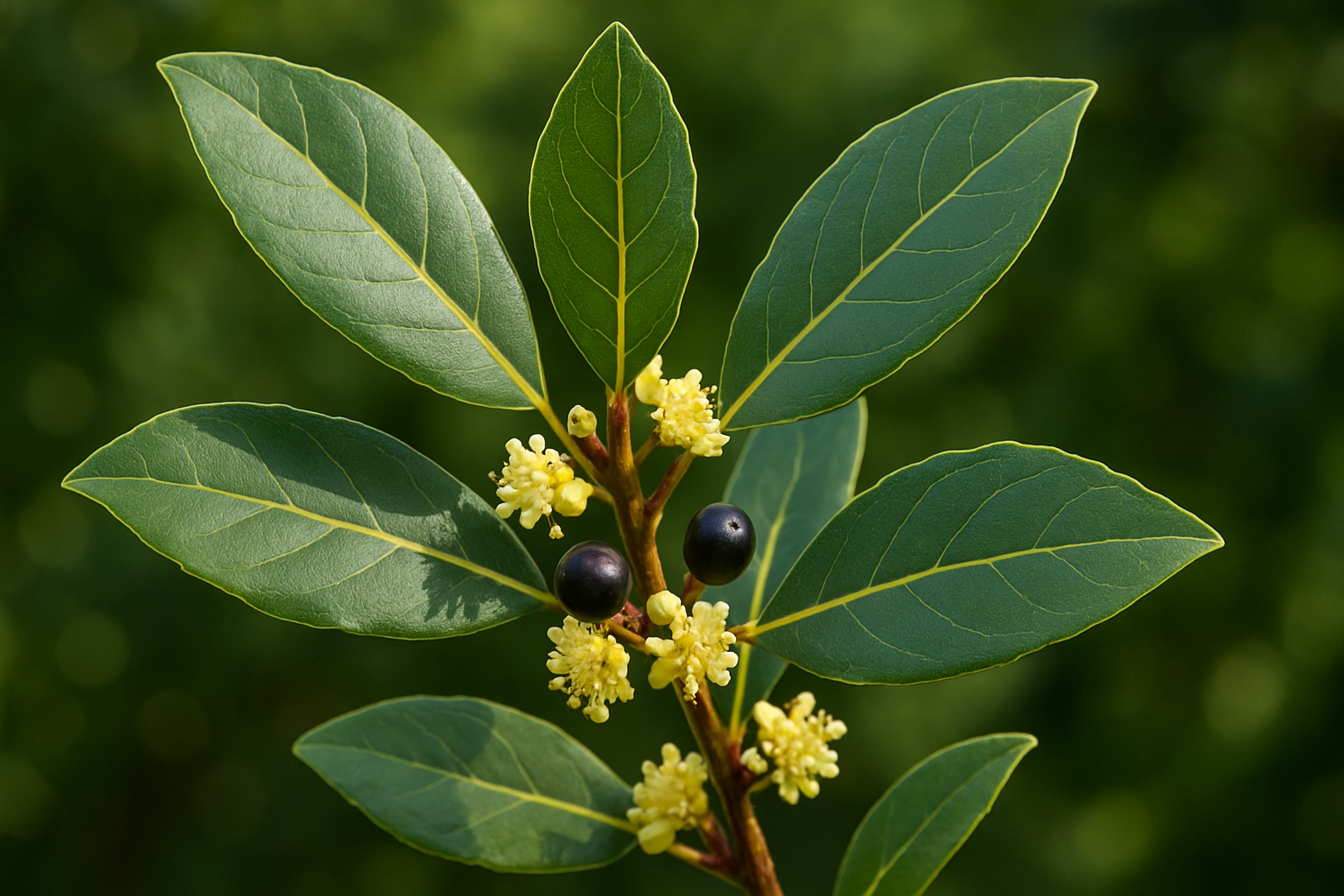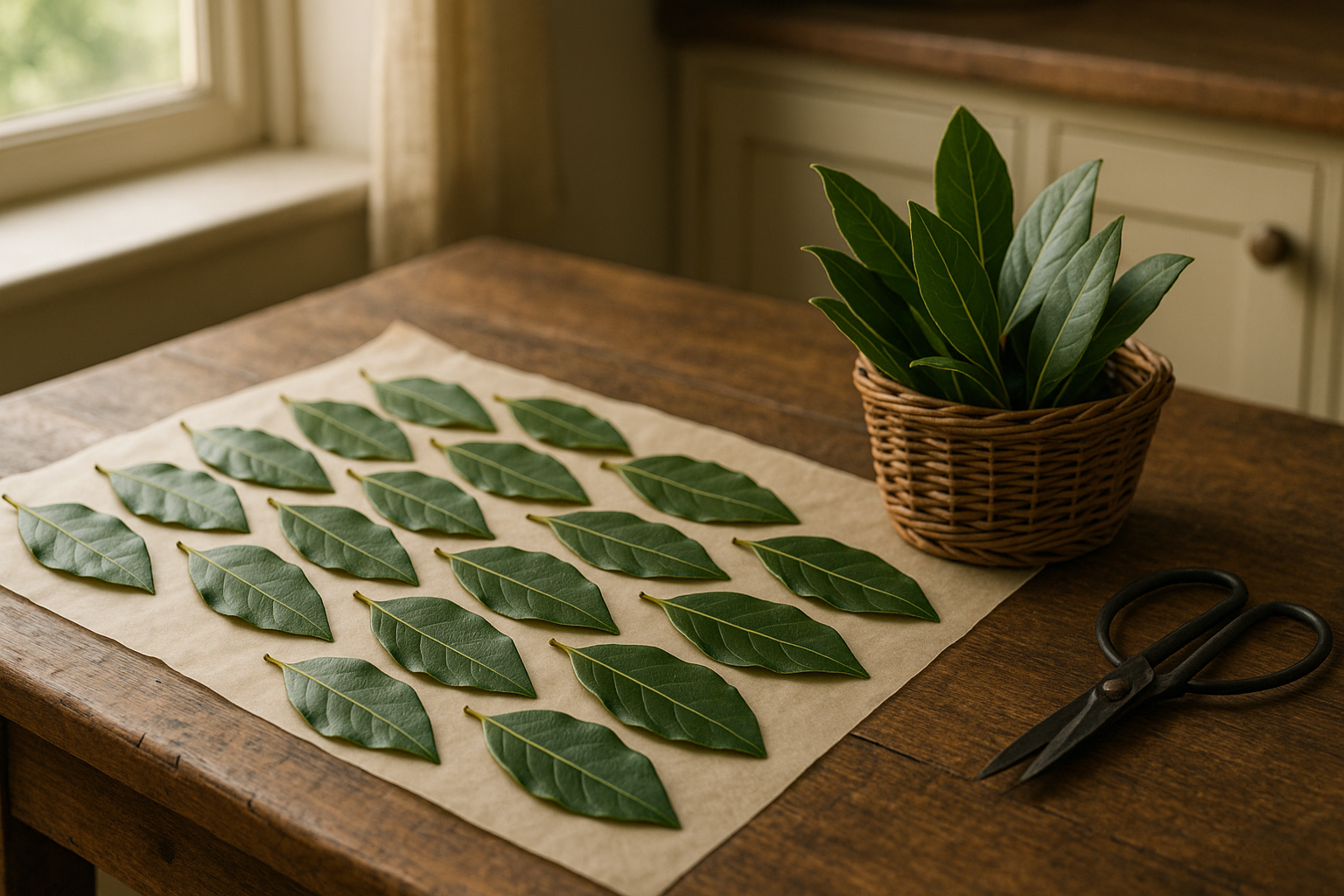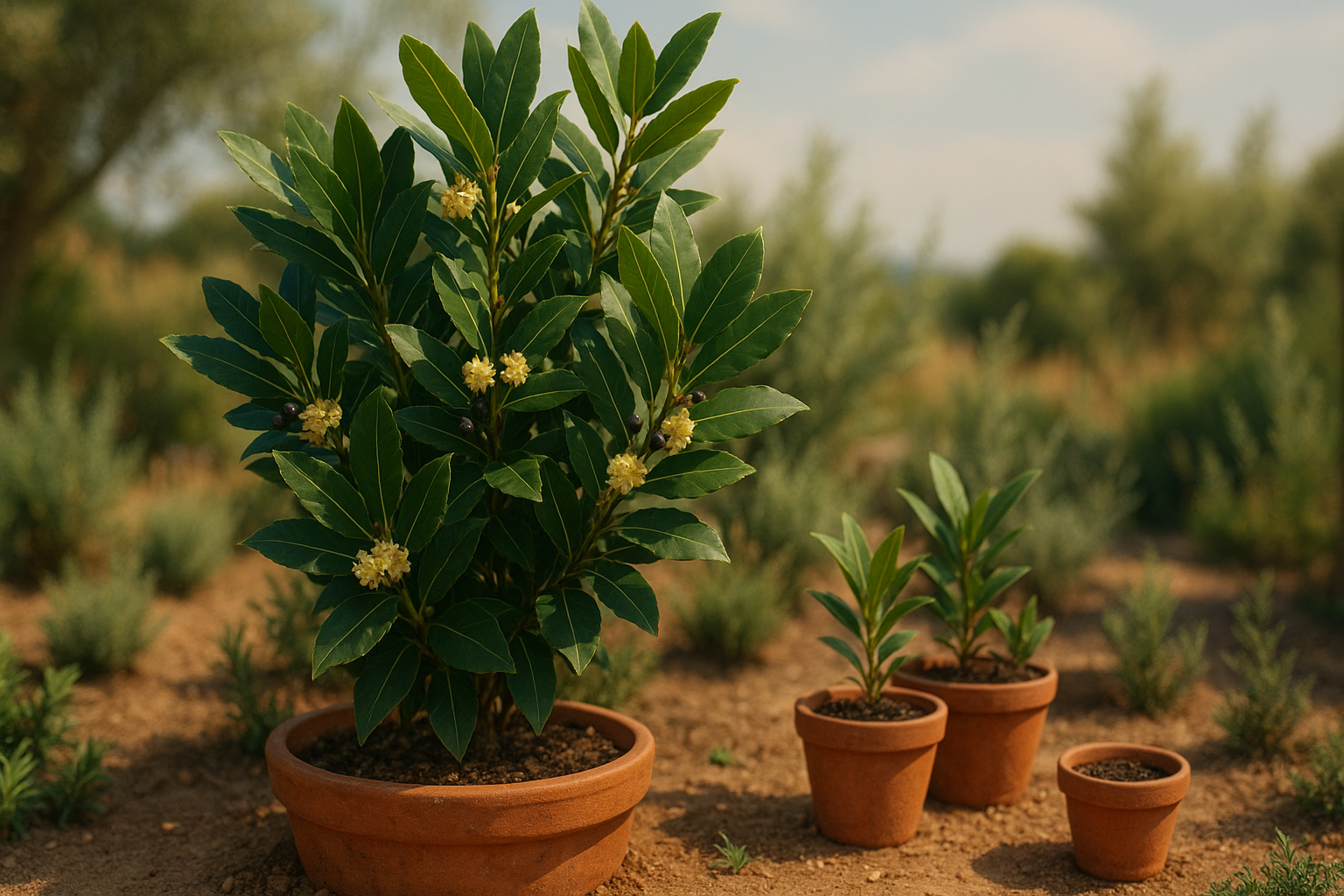Introduction
When it comes to flavoring your favorite soups and stews, the debate between bay laurel and bay leaf can get surprisingly confusing. Many home cooks and gardeners wonder whether the bay leaves in their spice rack are truly the same as the glossy bay laurel leaves they see growing in Mediterranean gardens. The truth is, while these terms are often used interchangeably, they don’t always refer to the exact same plant—and knowing the difference matters for both culinary results and safe gardening.
In the kitchen, using the right type of bay leaf can greatly impact the flavor of your dish. In the garden, understanding which plant you have helps prevent the accidental use of potentially toxic lookalikes. This article aims to clear up any confusion by explaining what sets bay laurel apart from other bay leaves, highlighting their unique uses, distinct characteristics, and how to ensure you’re choosing the right leaf for your recipes and your backyard. By the end, you’ll feel confident both in your spice selections and your plant care, and you might even develop a new appreciation for this ancient aromatic herb.
Understanding Bay Laurel

Bay laurel (Laurus nobilis), often called “true bay” or “sweet bay,” is an evergreen shrub or small tree valued both in the kitchen and the garden. Botanically, it belongs to the Lauraceae family and can reach heights of about 6 to 12 meters (20 to 40 feet) if left unpruned, though it’s commonly kept much shorter for culinary or ornamental use.
Native to the Mediterranean region, bay laurel thrives in warm, well-drained environments, making it a popular choice for gardens in zones 8 through 10. The leaves are the plant’s most distinguishing feature: they are leathery, glossy, dark green, and oval-shaped with slightly wavy edges, usually measuring 5–10 centimeters (2–4 inches) long. When crushed, bay leaves release a spicy, aromatic scent—one of the reasons they’re so prized in cooking.
In spring, bay laurel produces clusters of small, pale yellow flowers, followed by dark purple, berry-like fruits on female plants. In the wild, bay laurels grow as dense thickets or mixed in woodland. In cultivated settings, they’re often pruned into hedges or topiary shapes due to their slow, manageable growth.
Gardeners appreciate bay laurel not only for its flavor but also for its resilience to pests and drought. If you’re growing bay laurel at home, give it plenty of sun and avoid over-watering—root rot is a risk in soggy soils. You’ll also want to bring potted bay indoors if you live in a colder climate, as harsh frost can damage the plant.
Whether you know it as bay laurel, true bay, or sweet bay, this time-tested herb brings both beauty and utility to your landscape and kitchen.
What Is a Bay Leaf?
A bay leaf is a fragrant leaf commonly used in cooking to add depth and subtle complexity to soups, stews, sauces, and braises. Typically, when recipes mention “bay leaf,” they refer to the dried leaves of the Mediterranean bay laurel tree, scientifically known as Laurus nobilis. These leaves are oval-shaped, smooth, and slightly shiny, with a deep green color when fresh and a muted olive tone when dried.
Cooks usually add the whole leaf at the start of the cooking process and remove it before serving—the tough texture means bay leaves don’t soften enough to eat comfortably. However, Laurus nobilis isn’t the only plant marketed as “bay leaf.” In different regions, other varieties like California bay (Umbellularia californica), Indian bay (Cinnamomum tamala), and West Indian bay (Pimenta racemosa) are commonly used, each bringing its own twist.
For example, California bay leaves are more potent and have a sharper, almost eucalyptus-like edge, so you may want to use less if substituting them. Bay leaves have a unique aroma that is herbal and slightly floral—sometimes described as reminiscent of oregano, thyme, or even pine. Their flavor is subtle yet transformative, infusing dishes with a gentle bitterness and herbal warmth that amplifies other ingredients without overpowering them.
A handy trick: if you want to test your bay leaves’ potency, snap one in half. A good bay leaf will release a strong aroma instantly; if it smells faint or dusty, consider replacing your stash. Whether simmered in a classic tomato sauce or a comforting chicken soup, bay leaves may seem small, but they’re a kitchen essential for layering flavor in countless savory recipes.
Key Differences Between Bay Laurel and Bay Leaf
In everyday kitchens and grocery aisles, the terms “bay laurel” and “bay leaf” are often used interchangeably, but they actually refer to distinct things with important differences. Bay laurel (Laurus nobilis) is a glossy, evergreen shrub or small tree native to the Mediterranean region. Botanically, “bay laurel” describes the living plant with its aromatic, lance-shaped leaves, which can grow several meters tall. This plant is sometimes grown ornamentally in gardens or shaped as a decorative topiary.
On the other hand, when we talk about “bay leaves” in cooking, we’re referring to the dried leaves harvested from the bay laurel. Dried bay leaves are a popular spice used to flavor soups, stews, and sauces, prized for their subtle, complex aroma that fresh leaves often lack.
A common confusion arises in stores, where “bay leaf” might come from other, unrelated plants like California bay or Indian bay, which may look similar but impart different flavors and, in some cases, can be toxic if misused. When buying bay leaves for culinary use, look specifically for “Laurus nobilis” on the label to ensure you’re getting the classic Mediterranean variety favored by chefs.
In recipes, the dried form is standard because its robust, safe flavor infuses dishes well, while fresh leaves can be too pungent or tough. Remember, the botanical distinction matters when planting or sourcing the plant, while the culinary distinction is crucial at the spice rack—mixing them up can affect both safety and the outcome of your meal. Always remove the dried bay leaf before serving, as it remains tough even after cooking.
Culinary Uses and Varieties
Bay leaves are an essential ingredient in kitchens worldwide, adding a subtle earthy and aromatic flavor to soups, stews, sauces, and braised dishes. Classic French and Mediterranean recipes—like bouillabaisse, béchamel, and coq au vin—rely on the gentle bitterness and depth that bay leaves provide. In Indian cuisine, they’re a staple in biryanis, curries, and fragrant rice dishes, while in Caribbean cooking, bay leaves often enhance jerk seasonings and marinades.
The most widely used variety is Laurus nobilis, or “true” bay leaf, which offers a mild, slightly floral taste that blends well with other herbs without overpowering. However, it’s important to know that several other plants are sold as bay leaves but differ significantly in flavor and even safety.
California bay (Umbellularia californica) features a much stronger, almost medicinal and eucalyptus-like aroma—so use fewer leaves if substituting, as the intensity can overwhelm a dish. Indian bay leaf (Cinnamomum tamala) is botanically unrelated and delivers a scent more akin to cinnamon or cloves; it’s best reserved for authentic South Asian recipes.
Be cautious never to consume bay leaves whole—regardless of the variety—as their stiff, sharp texture can be hard to digest and may pose a choking risk.
When shopping, look for whole dried leaves that are olive green, not brittle or grayish, which can indicate staleness. Store bay leaves in an airtight container away from direct sunlight and heat; a dark pantry or cupboard is ideal. For maximum flavor, buy in small quantities and refresh your supply every 6–12 months, since bay leaves lose their potency over time.
For convenience and a fresher aroma, consider sourcing from reputable spice shops rather than supermarket jars that may have been sitting on shelves for years.
Growing and Caring for Bay Laurel
Bay laurel is a rewarding and practical herb to grow at home. It thrives best in warm, Mediterranean-like climates but also adapts well as a potted plant indoors or on patios in cooler zones. Choose a spot with plenty of sunlight—at least six hours a day—and well-draining, sandy soil. If you’re using a pot, pick one with good drainage holes and use a gritty potting mix.
Bay laurel grows slowly but steadily. Regular, light pruning helps keep it compact and encourages fresh, aromatic growth. Remember, fresh bay leaves contain more potent oils than dried ones, which can cause gastrointestinal discomfort if consumed in large quantities. Both fresh and dried leaves are quite stiff and can pose a choking hazard, especially for children and pets. Always remove whole leaves from dishes before serving.
Harvesting and Drying

For the best flavor, clip mature leaves in summer. Rinse them well and pat dry, then spread them in a single layer out of direct sunlight to air-dry for two weeks. Alternatively, use a food dehydrator for quicker results—just make sure the leaves become crispy and brittle before storing them in an airtight container.
This simple care routine ensures you have a steady supply of fragrant bay leaves to enhance your cooking, while keeping your household safe.
Conclusion
Bay laurel and bay leaves might sound interchangeable, but understanding their subtle differences can enhance both your cooking and gardening experiences. While bay laurel refers to the tree itself, bay leaves—whether fresh or dried—are the prized ingredient in countless savory dishes, adding aromatic depth to soups, stews, and sauces.
Whether you choose to grow a bay laurel plant at home or simply add a few leaves to your favorite recipe, the benefits are immediate: fresher flavors and a touch of Mediterranean charm right in your kitchen or garden. Try tucking some fresh leaves into homemade stocks, or grow a small bay laurel on your windowsill for a steady supply. It’s an easy way to explore new flavors and even save money at the grocery store.
If you’re intrigued, consider diving deeper by exploring different species of bay—like California bay or Indonesian bay leaf—each with its own unique fragrance and culinary uses. There’s a whole world of flavor within these leaves, so don’t hesitate to experiment, expand your palate, and breathe new life into your cooking or gardening projects by embracing bay laurel in all its forms.
